SAEDNEWS: Hasht Behesht Palace in Isfahan, a lasting masterpiece of Safavid architecture, is one of the spectacular attractions of Isfahan, located in the heart of this historic city. This palace was built in the year 1080 AH by the order of Shah Suleiman Safavi and stands in a large, lush garden, shining like a beautiful jewel.
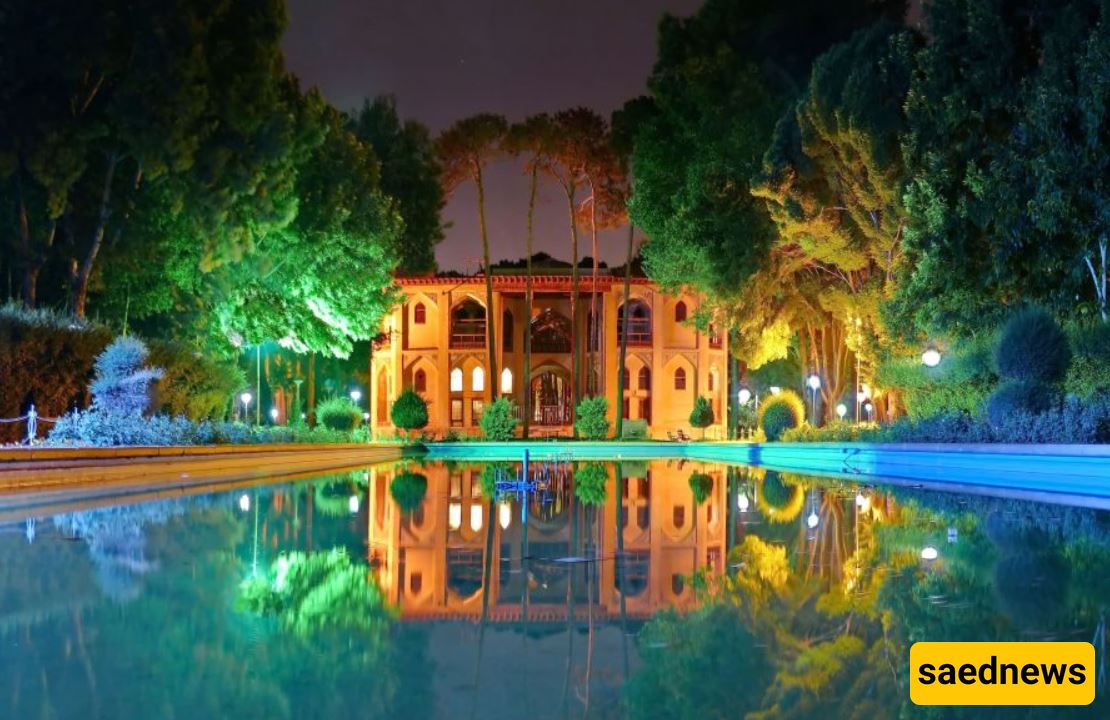
Isfahan is a city that, no matter how much we talk about its beauties, always has a corner ready to amaze us. Isfahan is a city full of historical attractions; if you are looking to visit a beautiful palace and at the same time enjoy its surroundings and the atmosphere of the famous Chaharbagh, do not miss Hasht Behesht Palace.
Hasht Behesht, with its two-story architecture and stunning decorations, is a prominent example of Isfahan’s attractions and of Iranian-Islamic art in the Isfahani architectural style.
Hasht Behesht Palace is one of the most beautiful and famous historical buildings in Isfahan and a prominent example of Safavid-era architecture. This palace was constructed during the reign of Shah Suleiman Safavi in 1080 AH. The name of the palace, “Hasht Behesht,” refers to “Eight Paradises,” symbolizing eight beautiful gardens or earthly paradises, which are reflected in the architecture and naming of the building.
Hasht Behesht Palace in Isfahan, with its octagonal design and structure, has four different facades, each with unique features. The exterior of the palace is adorned with tile work, stucco, and beautiful artistic paintings, while the interior, decorated with intricate artistic motifs, creates an exceptionally beautiful and pleasant space.
The palace is situated within a large and beautiful garden, which was once part of the vast Naqsh-e Jahan Garden of Isfahan. This garden, with tall green trees, extensive greenery, and beautiful flower arrangements, provides a serene and delightful environment for visitors. The garden surrounding the palace is one of the most important and attractive parts of the complex, allowing visitors to appreciate the palace’s beauty from different angles.
The interior of the palace includes several sections, all designed with exquisite detail, including the entrance porch, the central hall, the main veranda, and numerous rooms on the first and second floors.
The rooms of Hasht Behesht Palace feature artistic paintings of animals, birds, and hunting scenes, rendered with astonishing detail. The ceilings and walls are also decorated with beautiful stucco work and geometric patterns, which are among the most captivating aspects of the palace’s architecture.
Delicate tile work, floral and animal motifs, and beautiful colorings are prominent features of this palace, observable throughout its entirety. The unique artistic and architectural decorations of Hasht Behesht reflect authentic Iranian art, and observing these motifs and decorative details is fascinating and astonishing for every visitor.
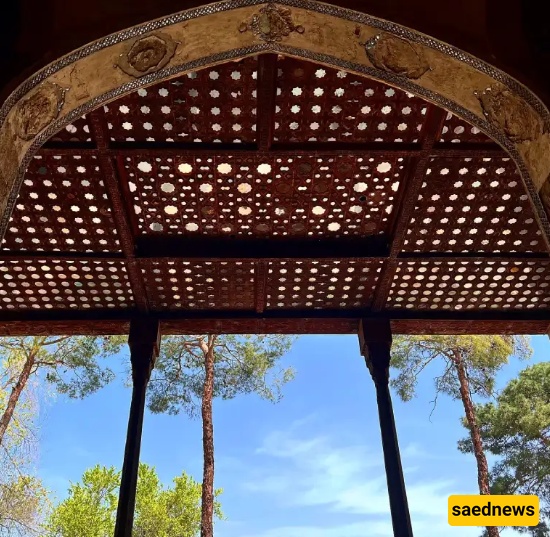
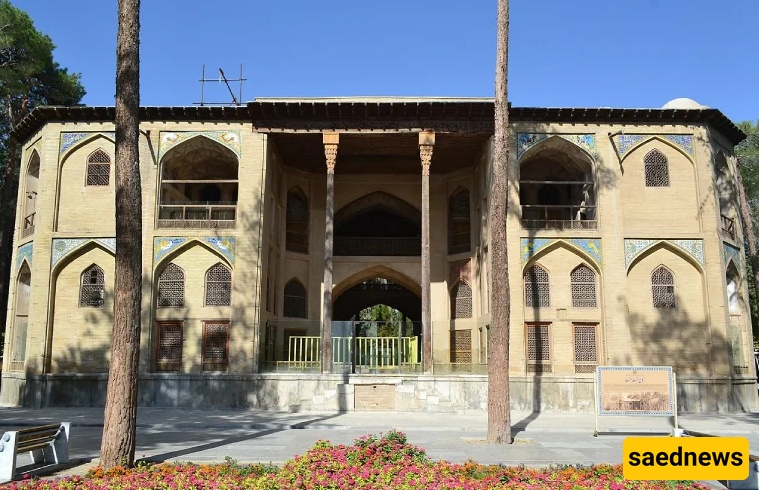
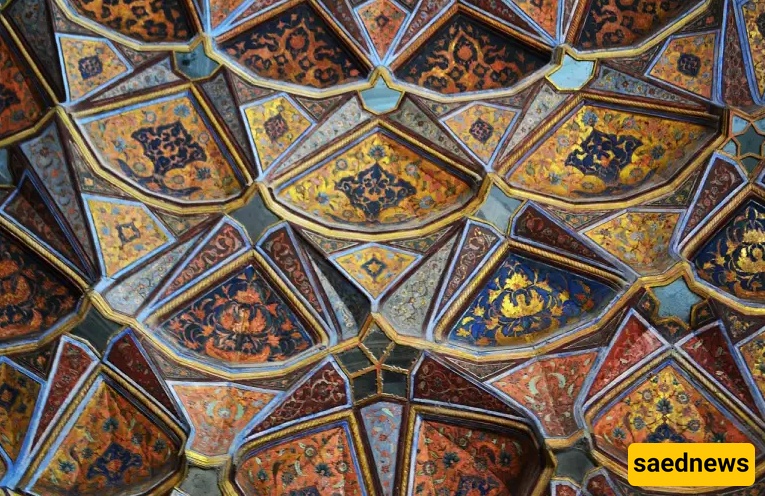
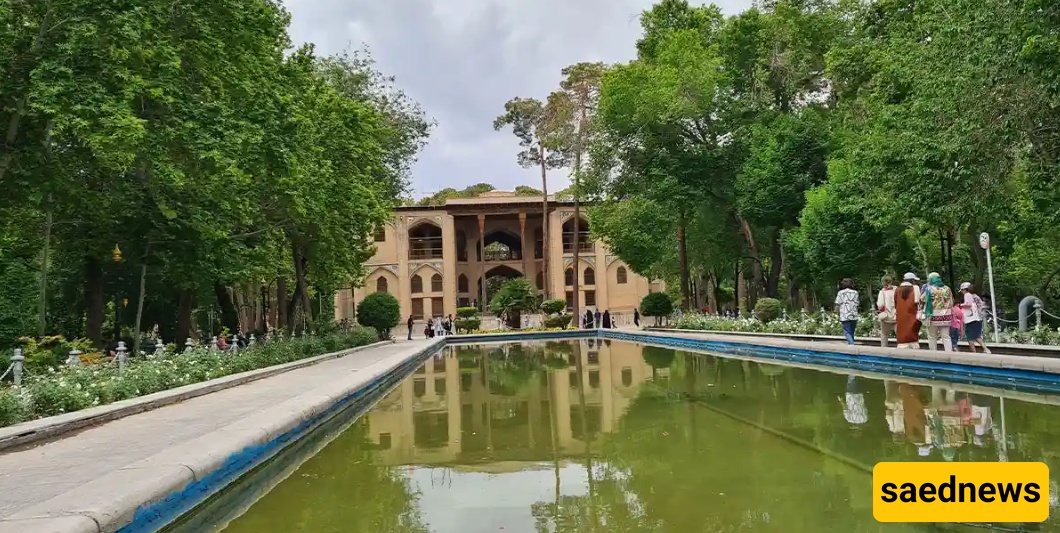
Hasht Behesht Palace is located in the city of Isfahan, on Goldasteh Street, within Shahid Rajai Park. You can also reach this beautiful palace from Chaharbagh Street, as it is situated opposite Sheikh Bahaei Street.
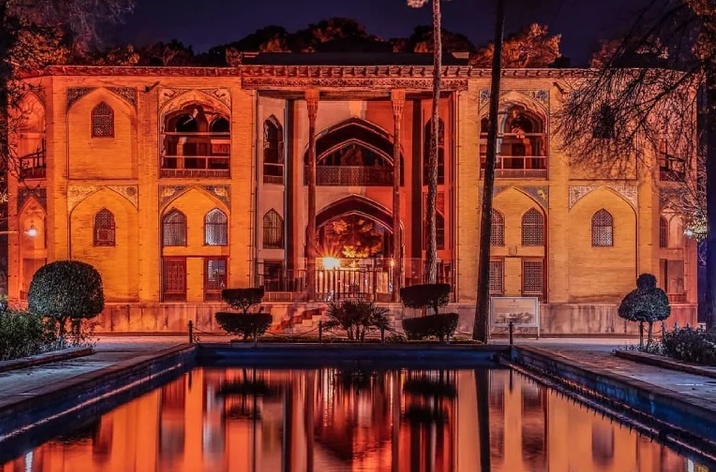
You can visit Hasht Behesht Palace and its surrounding park in any season of the year. The park, with its tall and impressive trees, has a special charm in every season: in spring and summer, it is lush and green; in autumn, the colorful leaves create a romantic and delightful atmosphere; and in winter, if it has snowed, a dreamy and breathtaking view unfolds before you.
If you are sensitive to extreme heat or cold, it is best to visit the palace during milder seasons such as spring and autumn. Additionally, the interior of the palace is open to visitors daily from 9:00 AM to 5:00 PM.
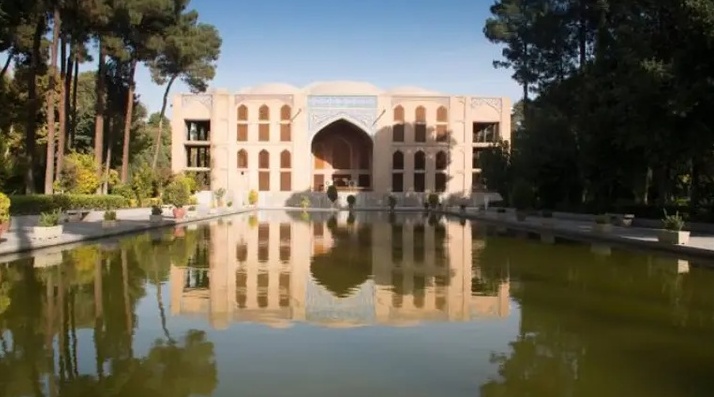
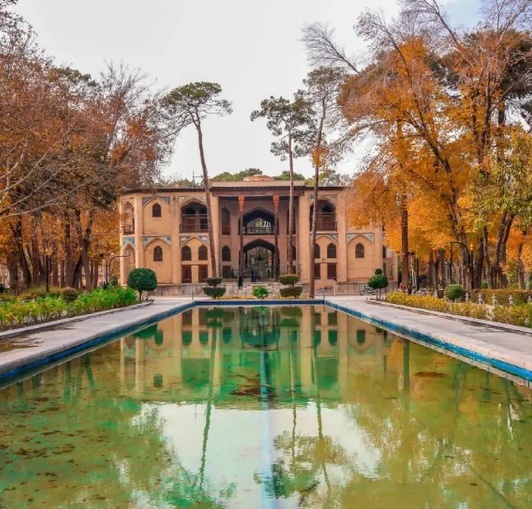
Hasht Behesht Palace, one of the brilliant legacies of the Safavid era in Isfahan, has a glorious history and an intriguing story. Its construction began in 1080 AH under the order of Shah Suleiman Safavi, and in a short time, it became a symbol of Isfahan’s grandeur and beauty. This unparalleled building was established within a magnificent garden along Chaharbagh Street.
The name of this palace, which means “Eight Heavens,” refers to a magical space said to evoke the image of paradise. The purpose of constructing this palace was to create a private space for the rest and leisure of the king and his courtiers; some also consider it to have been the residence of the king’s eight favorites, which gave rise to the name “Eight Heavens.”
During its time, this palace gained fame as the “most beautiful palace in the world,” and many travelers and poets, including Mirza Mohammad Taher Nasrabadi, composed numerous poems describing its beauty. During the Qajar era, the Eight Heavens Palace in Isfahan was entrusted by Naser al-Din Shah to Lady Eftekhar-od-Dowleh, on the condition that its structure and architecture remain unchanged.
However, after her death, the building underwent multiple alterations, and its magnificent golden decorations, paintings, and mirror work were hidden beneath layers of plaster due to excessive plasterwork in later periods. Nevertheless, in 1964, the palace and its gardens were transferred to the Ministry of Culture and Art, after which restoration efforts began to recover its artistic decorations and hidden beauties. Specialists from Iran and Italy worked together to restore the original grandeur and splendor of the building.
Today, the Eight Heavens Palace is under the supervision of the Cultural Heritage Organization and remains one of the most important historical attractions of Isfahan. The palace not only serves as a reminder of the exquisite Safavid-era architecture but, having been transformed into a park and public space, has also become one of the most popular recreational areas for both residents of Isfahan and domestic and international tourists.
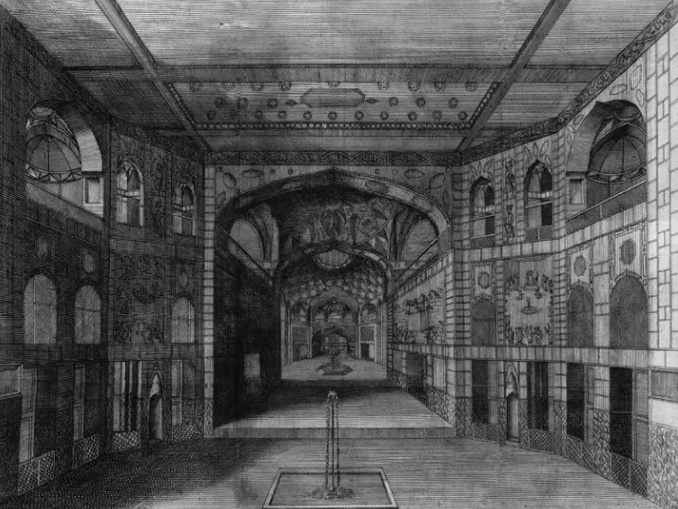
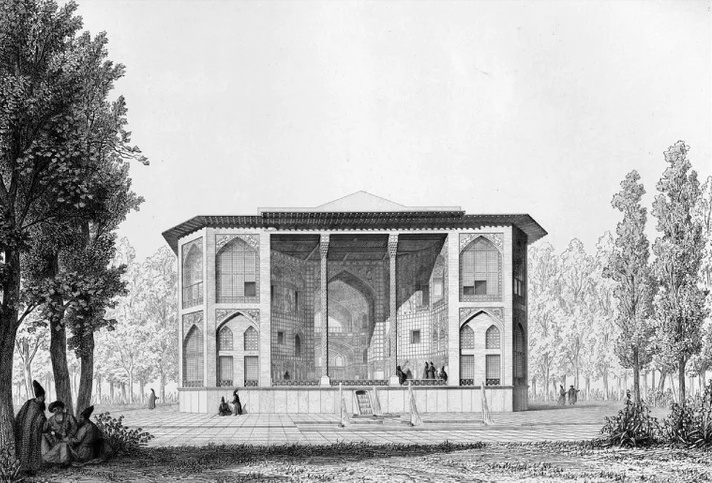
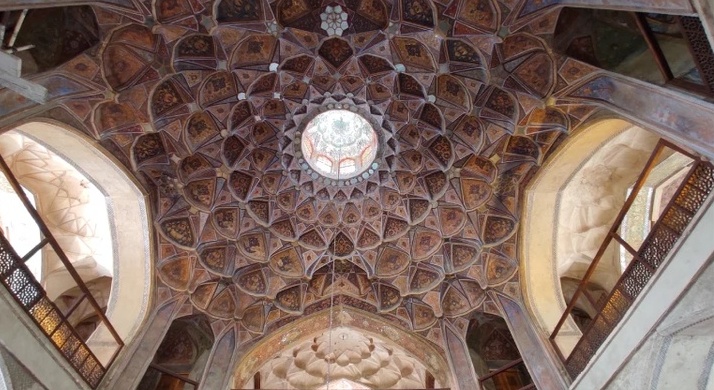
The Eight Heavens Palace in Isfahan derives its name from various legends and narratives. It is said that in the past, this area included eight beautiful gardens, each with unique characteristics, and for this reason, the entire complex was called “Eight Heavens.”
Additionally, some believe that the Safavid king intended to create a terrestrial version of paradise and transformed this palace into the residence of his eight favorite women; four of them lived on the ground floor, and the other four on the upper floor.
Another account states that the palace was named “Eight Heavens” due to its extraordinary beauty, as it surpassed the imagination of a terrestrial paradise. The name symbolized perfection and harmony in art and architecture. The octagonal structure is evident in all details of the palace, from the pools and rooms to the overall layout of the building, which may be one of the reasons it was named Eight Heavens.
Finally, another legend suggests that the palace was considered an “entrance to heaven,” where every visitor, upon entering, feels as if they are stepping into a heavenly vestibule on earth. This unparalleled building, with its stunning beauty and artistic design, has indeed become a realization of the concept of eight earthly heavens.
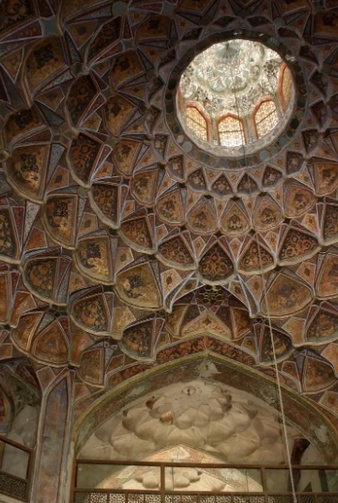
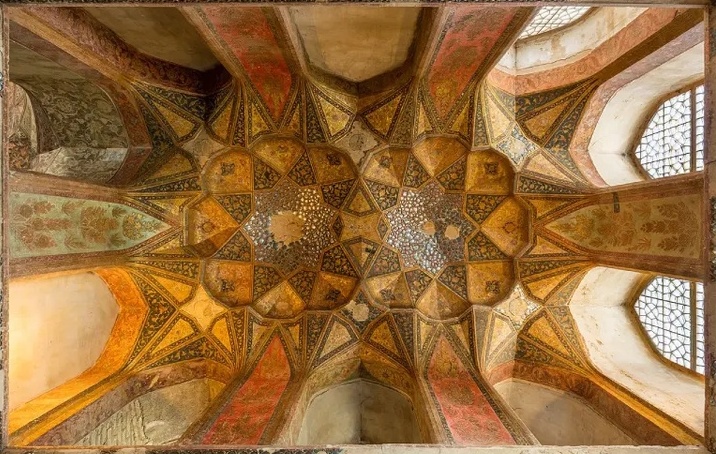
Hasht Behesht Palace, located in the Bolbol Garden of Isfahan, is one of the masterpieces of Safavid-era architecture, which, through creative design and the use of artistic elements, has become one of the most beautiful structures in the city. This two-story palace, built on a marble platform two meters above the garden level, captures the attention of every visitor with its tall wooden columns and intricate plasterwork.
The palace’s main veranda faces north, and its ceiling is adorned with exquisite muqarnas and eye-catching gilding. The central hall of the palace, featuring an octagonal pool with a fountain in the center, adds a sense of grandeur and tranquility to the interior space. The octagonal rooms surrounding the hall were designed specifically for hosting women and are decorated with beautiful paintings and abundant mirror work on the walls.
The second floor of the palace, with its verandas, arches, and rooms decorated with artistic features such as plasterwork, paintings, and glasswork, completes the splendor of this magnificent building. Some rooms also contain fountains and wall-mounted heaters, and the ceilings are covered with colorful tiles and charming muqarnas.
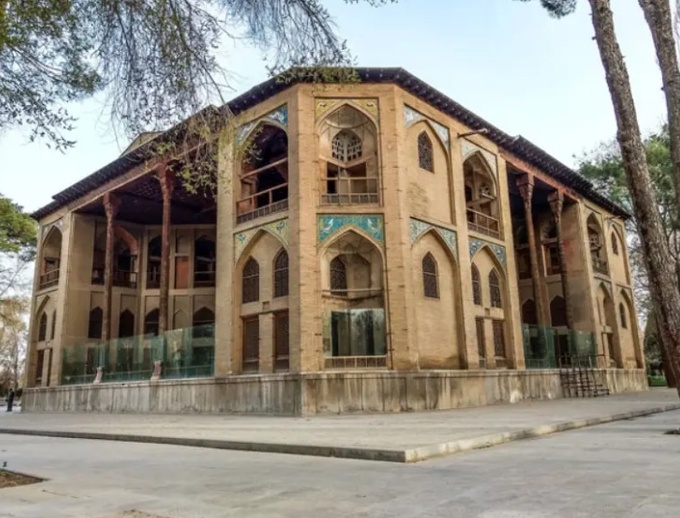
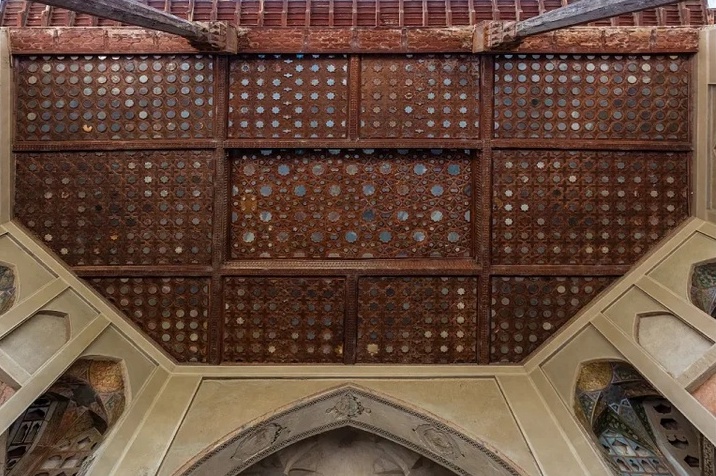
Hasht Behesht Palace in Isfahan, with its remarkable structure and artistic decorations, is considered one of the most spectacular historical palaces in the city. Below is an introduction to its various sections and the attractions of each:
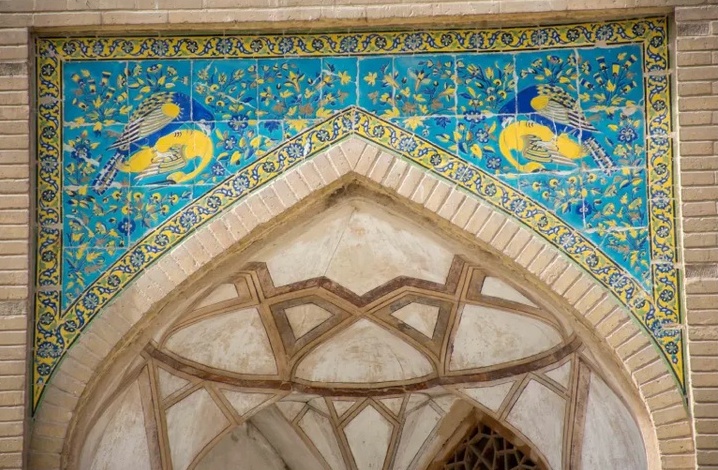
The garden surrounding Hasht Behesht Palace, now functioning as a park, includes ancient trees, beautiful flower arrangements, and green pathways, providing a peaceful and pleasant area for walking. This green space is designed in a way that allows visitors to view the palace from different angles. For nature and photography enthusiasts, this section is one of the most scenic parts of the palace and is especially breathtaking in spring and autumn.
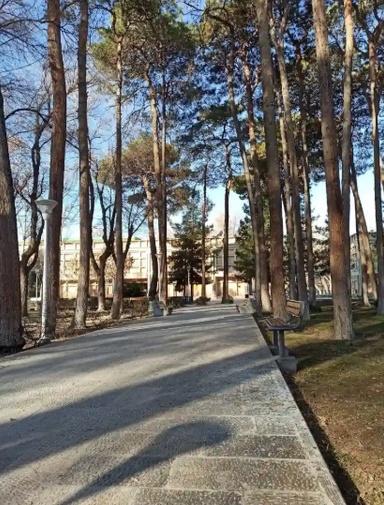
The palace’s entrance veranda is a gateway with delicate architecture and artistic decorations in the Safavid style, giving the building a majestic appearance. By observing the architectural and tilework details in this section, visitors can feel the grandeur and magnificence of Iran’s past. The entrance veranda makes the experience of entering the historical world of the palace even more memorable.
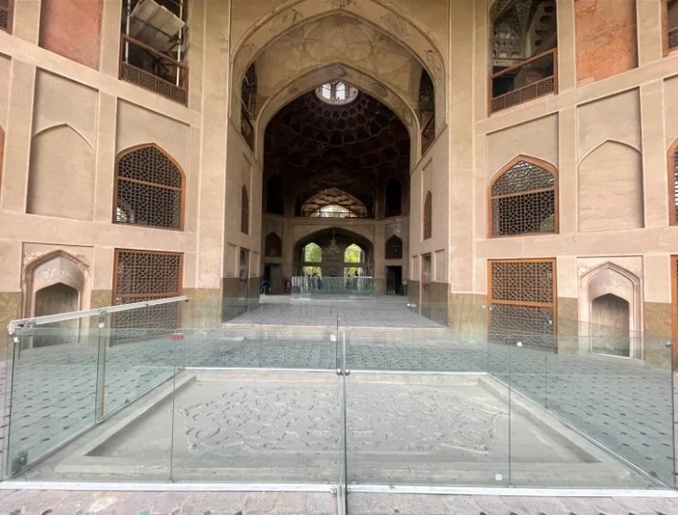
The entrance hall is where the palace’s beauty gradually begins to reveal itself. This section features delicate plasterwork and decorated columns, creating a space that reflects both the simplicity and the grandeur of the Safavid era. Visiting the entrance hall is recommended for architecture and art enthusiasts, as it symbolizes the transition from the external environment into the palace’s extraordinary inner world.
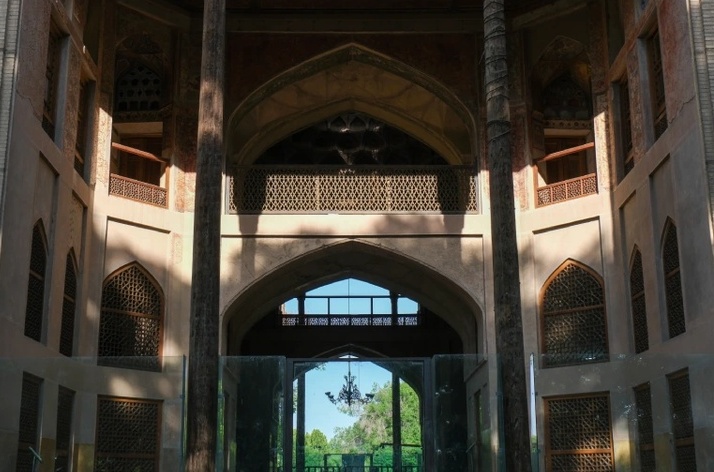
The main iwan is where the palace’s octagonal structure is most prominent. Here, visitors can admire the beauty of Iranian art, particularly the delicate tilework and stunning paintings. The main iwan offers an excellent view of the surrounding gardens and open spaces of the palace, providing a perfect opportunity for photography and enjoying the royal architecture of this magnificent building.
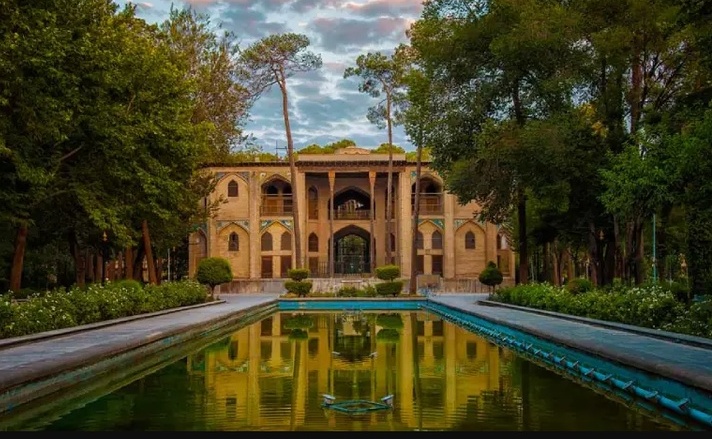
The first-floor rooms, with their exceptional decorations and high ceilings, invite visitors into a unique world of Safavid art and architecture. These rooms are designed to convey a sense of peace and grandeur. Beautiful windows and colorful wall patterns create a calming and pleasant space for rest and enjoying the external views.

The second floor of the palace also features beautiful and unique rooms, accessible via delicate and elegant staircases. These rooms were designed to host and accommodate kings and distinguished guests and feature more elaborate decorations than the first-floor rooms. From these rooms, visitors can enjoy a remarkable view of the garden and the palace’s exterior spaces, offering a chance to fully appreciate the lush surroundings.
The ceiling of Hasht Behesht Palace is adorned with unique artistry, making it one of the most striking features of its architecture. Intricate plasterwork and geometric patterns give the ceiling an extraordinary grandeur that amazes visitors. For lovers of Iranian art and architecture, observing these ceilings can provide a memorable and exceptional experience.
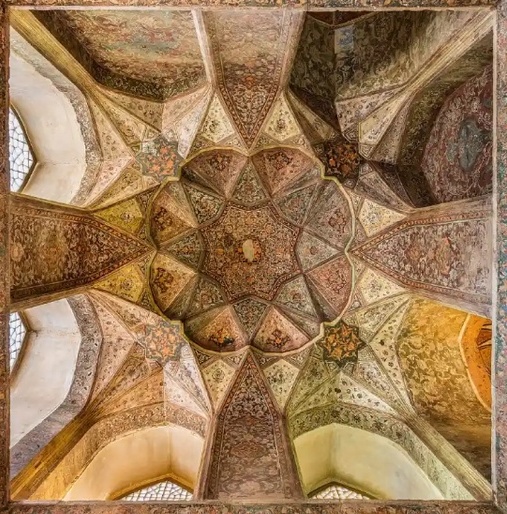
The walls and ceilings of the palace are decorated with artistic paintings of birds, reptiles, and hunting scenes. These paintings, found throughout the palace, bring a lively and dynamic character to the historic building, allowing viewers to feel as though they are flipping through a book of art and nature from that era. The delicate and diverse decorations make Hasht Behesht Palace one of the finest examples of Iranian art and are highly recommended for anyone interested in culture and history.

As mentioned, this beautiful palace is located in the middle of Hasht Behesht Park in Isfahan, also known as Shahid Rajaei Park. Therefore, visitors have access to restrooms and a supermarket, and there are seating areas in the park for resting and enjoying fresh air. Additionally, a large parking lot is located next to the park.
Hasht Behesht Palace is also very close to Chaharbagh, giving visitors access to various cafés and restaurants. Along Chaharbagh, there are a variety of shops, including clothing stores, toy stores, souvenir shops, watch stores, and more.
Hasht Behesht Palace is one of the most beautiful and historic buildings in Isfahan, attracting visitors from around the world every year with its unique architecture and stunning tilework. For a better and more enjoyable visit, we have listed some important tips below:
To enjoy pleasant weather and optimal lighting, it is better to visit the palace early in the morning or in the late afternoon. Especially during the spring and autumn seasons, the delightful climate of the area will make your visit even more enjoyable.
Typically, visiting Hasht Behesht Palace takes about one hour. This time is sufficient to explore the interior of the palace and appreciate its architectural details and scenic views.
On holidays, you can also visit the surroundings of Hasht Behesht Palace and its exterior areas.
There is no need to pay a separate entrance fee for each section of the palace. By paying a single entrance fee, you can access all parts of the palace and the surrounding gardens.
During your visit, please respect the peace and quiet of other visitors. Also, avoid touching or damaging the historical artifacts to ensure that this cultural heritage is preserved for future generations.

